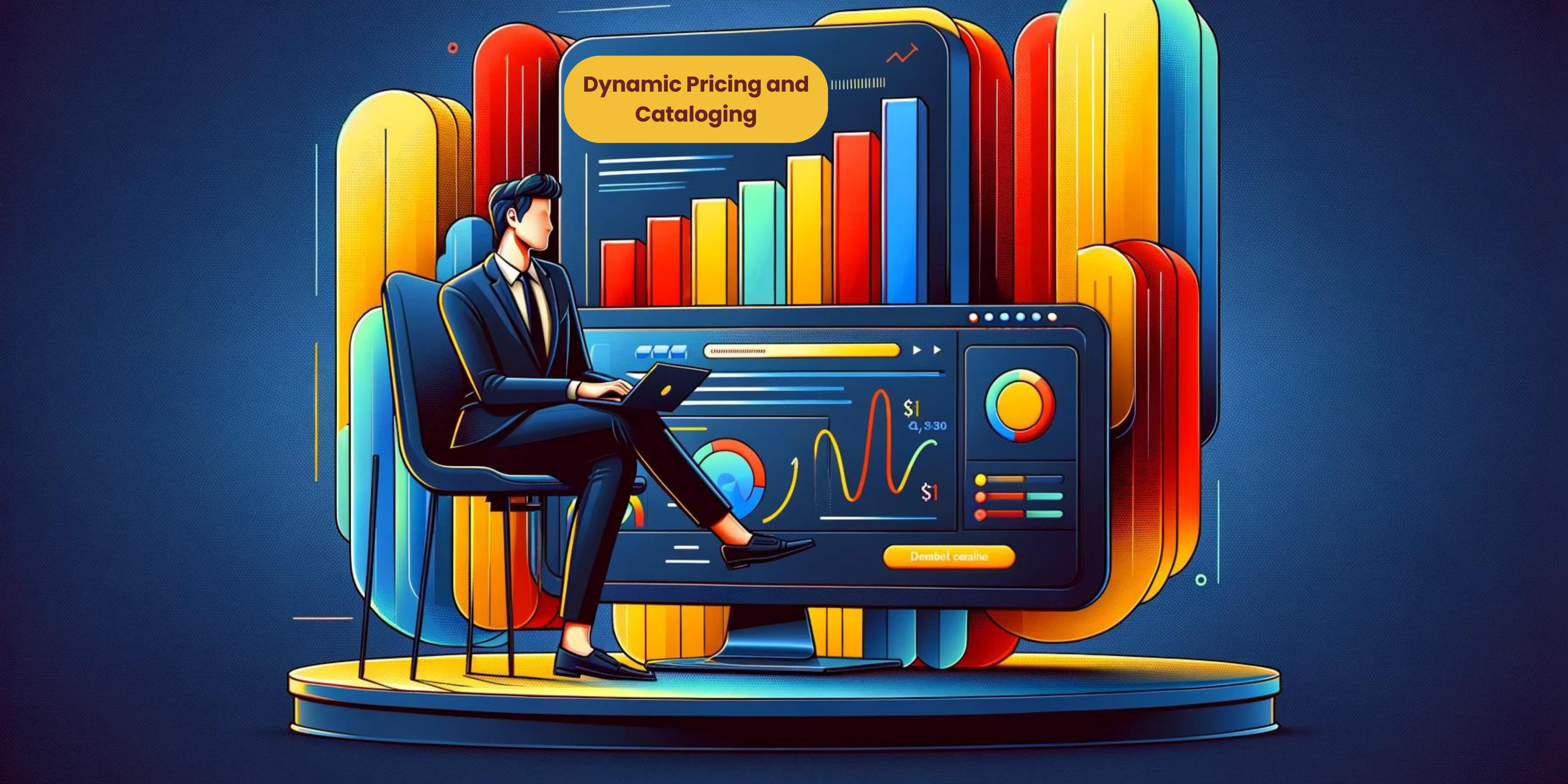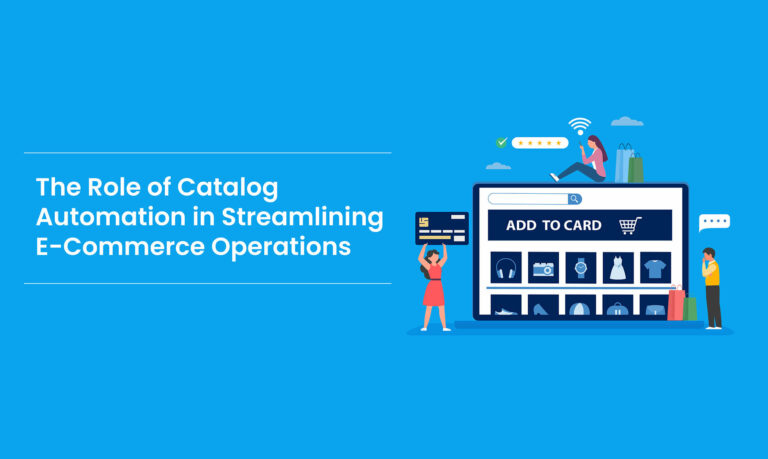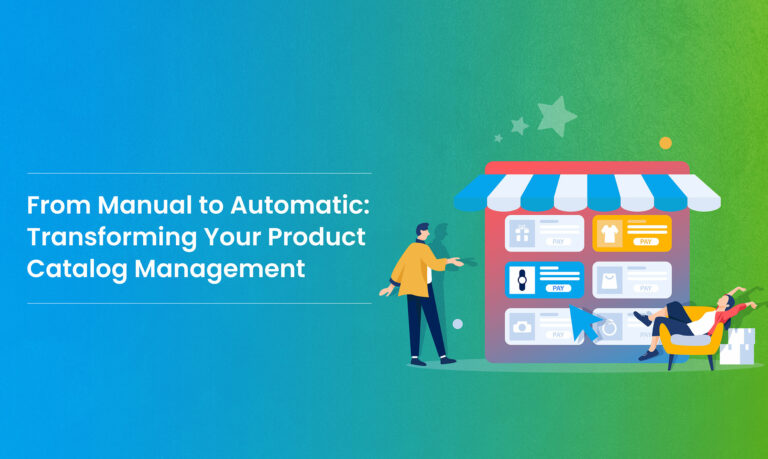The collaboration between dynamic pricing and automated cataloging allows businesses to tailor product displays. By grasping customer preferences and market trends, the eCommerce product catalog can dynamically feature products with adjusted prices, crafting a personalized shopping experience that resonates with each buyer.
The fusion of dynamic pricing and automated cataloging solution streamlines the real-time monitoring of competitors. Businesses can instantly track rivals’ pricing strategies and product updates, enabling adaptive decision-making. This immediate awareness ensures sustained competitiveness, allowing companies to seize opportunities and promptly address risks.
Integrating dynamic pricing with automated cataloging streamlines inventory management. Businesses can adjust pricing efficiently based on inventory levels, preventing overstock or stockouts. This optimization ensures competitive pricing while maintaining an optimal balance in stock availability.
Introduction
In the fast-changing world of online shopping, businesses are constantly searching for smart ways to stay ahead. Think of it like this: you’re in a race, and everyone wants to be the leader. Well, guess what? There are these super cool tools called dynamic pricing and cataloging, and they run on automation. It’s like having a turbo boost for your online store. So, why are these tools a big deal? Because they help businesses not just survive but thrive in the ever-changing online market. This blog explores how these awesome tech tools are changing the game in online store inventory management.
The Role of Automation in Dynamic Pricing
Imagine the price of your favorite product changing like the weather, adjusting not just because of supply and demand but also based on how people like you are buying it. That’s dynamic pricing! It’s like a magical pricing strategy that adapts to what customers are doing and what the market is up to. And what makes this magic happen? Automation is the tech behind the scenes that helps businesses stay agile and competitive in the ever-changing market. Let’s delve deeper into the specific functions of automation that play a pivotal role in shaping dynamic pricing strategies:
1. Real-time Data Analysis: Unveiling Market Dynamics
Automation tools empower businesses with the ability to conduct real-time data analysis on an unprecedented scale. This involves:
- Vast Dataset Analysis: Imagine the internet as a massive treasure trove of information, especially when it comes to online shopping. There’s so much data out there that it can be like searching for a needle in a haystack. But guess what? Imagine having super-smart tools that not only find that needle for you but also tell you all about the latest trends, what people love to buy, and even what the other shops are up to. These tools are like digital superheroes, making sense of all that information so businesses can offer you exactly what you want.
- Market Trends Examination: By continuously monitoring market trends, businesses gain a nuanced understanding of consumer behavior. This real-time insight enables them to adapt pricing strategies promptly, aligning with evolving market dynamics.
- Competitor Pricing Analysis: Think of automation as a vigilant companion that is constantly keeping an eye on the actions of your competitors. It assists you in pricing analysis in real-time, allowing you to quickly adapt to any changes in the cost of rivals’ products. This superhero squad ensures that you maintain your market position and remain competitive.
2. Algorithmic Intelligence: Navigating Complexity with Precision
The infusion of advanced algorithms, driven by machine learning capabilities, is a game-changer for businesses leveraging dynamic pricing. Here’s how automation enhances algorithmic intelligence:
- Market Fluctuation Prediction: Machine learning algorithms process historical data, identifying patterns and predicting market fluctuations. This forward-looking capability enables businesses to preemptively adjust prices in anticipation of changing demand or external factors.
- Seasonal Trends Recognition: Automation facilitates the identification and analysis of seasonal trends. Whether it’s holiday seasons, festivals, or industry-specific cycles, algorithms can adapt pricing strategies to align with these recurring patterns.
- Consideration of External Factors: Beyond internal data, algorithms factor in external elements such as economic conditions, ensuring a holistic approach to dynamic pricing. This adaptability is crucial for responding to macroeconomic shifts that impact consumer behavior.
3. Competitor Monitoring: Staying Ahead in the Race
Competitor monitoring is a core function facilitated by automation, ensuring businesses remain proactive and responsive to market changes:
- Continuous Surveillance: Think of automation tools as vigilant guardians constantly keeping an eye on what your competitors are doing with their prices. They are able to collect crucial data swiftly because of their real-time monitoring capabilities. By making thoughtful and well-informed decisions, companies may use this skill to stay beyond the competition and preserve their edge over others in the competitive marketplace.
- Strategic Positioning: Understanding how competitors price similar products allows businesses to position themselves strategically. Automation facilitates the extraction of actionable insights, enabling businesses to set prices that are not only competitive but also reflective of their unique value proposition.
Cataloging: Elevating the Shopping Experience
Cataloging involves the systematic organization and presentation of products or services in a way that enhances the shopping experience. An effectively curated eCommerce Product Catalog goes beyond listing items; it tells a story, guides the customer journey, and maximizes the likelihood of a purchase.
Automation’s Role in Smart Catalog Assembly: A Comprehensive Exploration
Dynamic and efficient cataloging is at the heart of an exceptional shopping experience, and automation plays a pivotal role in achieving this. Let’s delve into the intricacies of how automation transforms the cataloging landscape:
1. Product Information Management (PIM): Elevating Information Accuracy
- Streamlined Information Handling: Automation tools, particularly those integrated into Product Information Management (PIM) systems, revolutionize the management of extensive product information. This includes details such as specifications, images, pricing, and inventory levels.
- Consistency Across Platforms: Ensuring that all the information about a product remains consistent, no matter where customers come across it, is crucial for providing a hassle-free experience. Automation comes to the rescue by eliminating the manual task of updating various locations. This not only saves time but also reduces the likelihood of errors or discrepancies, making everything match up seamlessly.
- Efficiency Enhancement: With automation, the labor-intensive task of managing vast product catalogs becomes significantly more efficient. Businesses can handle large volumes of data effortlessly, allowing for quicker updates and changes.
2. Personalization: Tailoring the Shopping Experience
- Customer Behavior Analysis: Automated cataloging incorporates data on customer behavior and preferences. This data is then analyzed to gain insights into individual shopping patterns, allowing for a personalized approach.
- Best Products to Buy: Imagine you have your own personal shopping assistant – that’s what automation does for businesses! With the magic of automation, they can suggest products that match your style and preferences. It’s a way for businesses to connect with you on a more personal level and make your shopping experience uniquely tailored to your liking.
- Cross-selling and Upselling Opportunities: By understanding a customer’s buying habits, automated cataloging opens avenues for strategic cross-selling and upselling. Recommendations can be tailored to encourage the purchase of complementary products or upgraded versions, increasing the overall transaction value.
3. Up-to-date Catalogs Made Easy with Dynamic Content Updates
Envision your preferred e-commerce platform as an ever-evolving showroom where the newest items effortlessly find their position, prices fluctuate, and product specifications are accessible at all times. Dynamic content updates are a game-changer in the world of online buying because of their enchantment.
- Effortless Introduction of New Goodies:
Ever noticed how swiftly your go-to online store showcases new stuff? Automation is the wizard behind this magic trick. Whether it’s a trendy collection, seasonal delights, or just fresh inventory, automation makes sure these newcomers smoothly join the product lineup. No hiccups, just a hassle-free shopping spree.
- Keeping Prices on Point:
In the dynamic world of shopping, prices can be as changeable as the weather. Thanks to automation, you’re spared the confusion. Real-time updates ensure that prices are always accurate. No surprises, just fair and up-to-date figures so that you can shop with confidence.
- Descriptions that Keep You in the Know:
Ever clicked on a product only to find outdated details? Not a pleasant experience. Automation steps in to avoid such pitfalls. With its nimble touch, product descriptions get swift updates to reflect any changes—be it new features, specifications, or any other important info. It’s like having a personal shopper keeping you in the loop.
In essence, automation’s role in cataloging transcends mere efficiency; it shapes the very essence of the customer’s journey. From ensuring the accuracy and consistency of product information to delivering a personalized shopping experience, automation serves as the backbone of a modern and effective cataloging strategy. As businesses embrace the power of automated cataloging, they not only streamline their internal processes but also create an environment where customers feel understood, catered to, and ultimately inclined to make informed purchasing decisions.
The Competitive Edge: Where Dynamic Pricing Meets Cataloging
1. Strategic Synchronization: By combining dynamic pricing with automated cataloging, businesses achieve strategic synchronization. Prices are adjusted dynamically, reflecting changes in the market, while the catalog evolves seamlessly to showcase these price shifts, ensuring coherence in the customer experience.
2. Agility in Response: Automation equips businesses with the agility to respond swiftly to market dynamics. If a competitor initiates a price change, dynamic pricing tools can analyze and match the shift, while automated cataloging ensures that the corresponding product adjustments are efficiently implemented.
Wrapping up
Businesses that use automation to support dynamic pricing and cataloging stand to gain an edge over their competitors in the constantly shifting landscape of e-commerce. Through the use of these technologies, businesses not only adjust to changes in the market but also dynamically mold the customer experience, laying the foundation for long-term development and competitiveness. The way dynamic pricing and cataloging work together is evidence of the revolutionary power of technology in the e-commerce space as we go further into the automation age.


